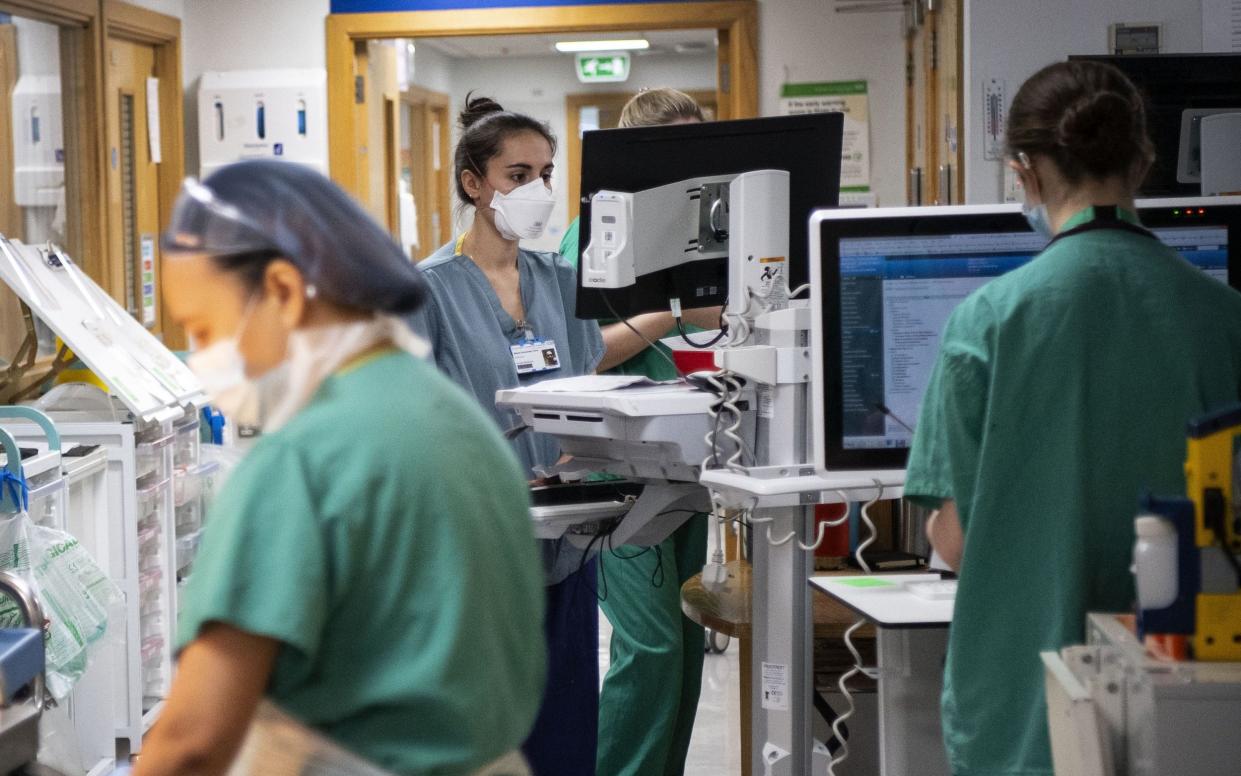Overcrowded NHS hospitals to see patients at home in ‘virtual wards’

Hospital patients will be placed in “virtual wards” as part of efforts to free up space and avert an NHS winter crisis.
Health chiefs have announced plans to create “the equivalent” of 7,000 beds with increasing numbers of patients monitored at home.
The proposals came amid increasingly chaotic scenes in accident and emergency departments across Britain, with the Royal College of Emergency Medicine calling for an extra 13,000 beds to be made available.
On Thursday, official figures showed that almost 30,000 patients waited at least 12 hours on A&E trolleys after the decision was taken to admit them.
The figure of 29,317 was a rise of a third on the previous month. Before the pandemic, the figure for the same month was just 450.
Meanwhile, ambulance services are recording some of the worst waits on record, including hour-long delays for patients suffering heart attacks and strokes.
The new plans also pledge to answer 999 calls within ten seconds – against a current average of more than one minute.
The action followed warnings from Steve Barclay, the Health Secretary, that “a real sprint” is required by the Government to avert a winter crisis, with plans to recruit overseas workers to work in the care sector.
Prof Sir Stephen Powis, the national medical director for NHS England, said that the health service was “taking every step possible” to ensure it was prepared for any additional pressure in winter.
Health officials said that the plans will mean there is far more use of virtual wards, which means patients can be “remotely monitored” using medical devices such as pulse oximeters, wearable devices and other technology to check vital signs.
Such schemes are already in use in some hospitals and are used to check on patients with conditions such as chronic obstructive pulmonary disease.
Health officials also said they would work closely with social services to ensure that patients were able to quickly get care and support to leave hospital.
News of the virtual wards came amid warnings that a 10-day stay in hospital can age a pensioner by 10 years, in terms of lost muscle mass.
Health leaders said that the pressures on hospitals are being fuelled by a crisis in social care, meaning that thousands of elderly patients are stuck in hospital for want of help at home, as well as a lack of care home places and systems to discharge patients.
As a result, there are growing queues of patients waiting for admission.
Latest data show that six in 10 hospital patients who are medically fit for discharge are stuck in hospital, amid a growing crisis in social care. On average in July, 21,741 patients each day were assessed and found well enough to be sent home. However, more than 8,800 were actually discharged, the NHS data show.
The statistics came as fears grew of a major social care crisis, meaning that thousands of hospital beds are being used by patients who should either be given help at home or sent to a care home.
Funding increases for health and social care resulted in National Insurance contributions rising by 1.25 percentage points in April. However, there is concern that the funds for social care have been given too low a priority, with money coming through too slowly.
Senior NHS leaders have warned that hospitals are “grinding to a halt” because of a growing crisis in social care, with “staggering” numbers of frail and vulnerable people stuck on wards for weeks on end.
In recent days, health officials have set out a series of measures aimed at relieving pressures on hospitals and tackling long waits. Many rely heavily on the use of virtual consultations.
Health officials have said patients facing long waits for hospital appointments could be told they could shorten it by having a virtual slot with a site elsewhere in the country.

However, patient groups expressed concerns about the proposals, saying it was “extremely dangerous to try to palm people off with virtual appointments”.
Health officials said the extra 7,000 beds would include a mixture of “virtual” and physical beds, but were unable to say what the split would be.
Hospitals are being encouraged to find other ways to expand capacity, including opening new buildings.
Health chiefs have pledged an extra £10 million for mental health services, more workers to support GPs and promised to recruit more call handlers. At least 4,800 staff are working in 111 and 2,500 in 999 call rooms to deal with higher demand.
Prof Sir Stephen said: “Ahead of the winter, we want to make sure we are doing everything we possibly can to free up capacity so that staff can ensure patients get the care they need – this includes timely discharge, working with social care, and better support in the community with the expansion of virtual wards.”
Mr Barclay said: “To prepare for what could be a challenging winter, I am working closely with the NHS at pace to ensure we are ready for the pressures ahead. By increasing capacity, boosting NHS 111 and 999 support, tackling delayed discharge and using new innovations such as virtual wards, we can help patients get the care they need, when they need it.”

 Yahoo Movies
Yahoo Movies 
